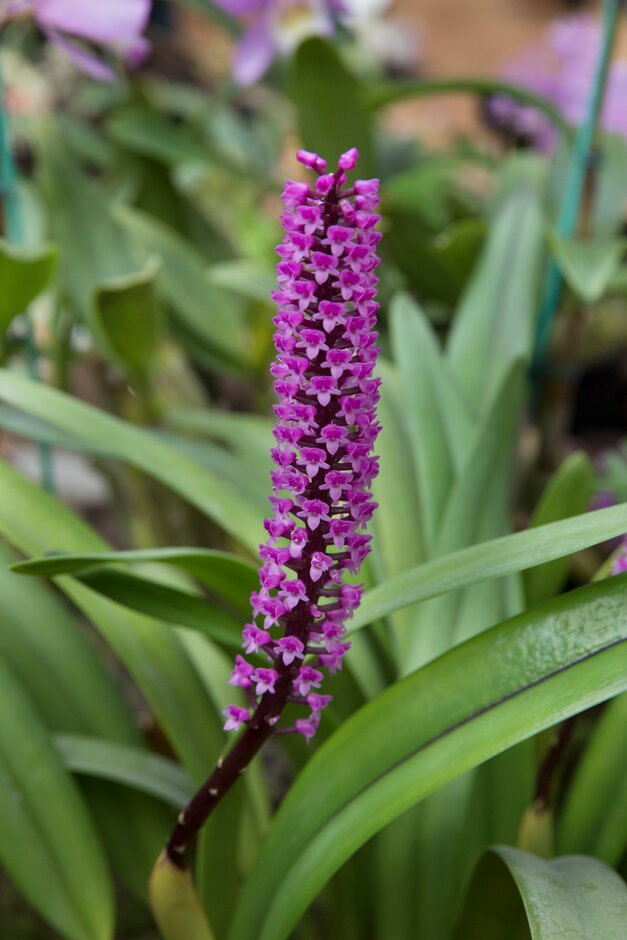Size
Ultimate height
0.1–0.5 metresTime to ultimate height
2–5 yearsUltimate spread
0.1–0.5 metresGrowing conditions
Moisture
Moist but well–drained, Well–drainedpH
NeutralColour & scent
| Stem | Flower | Foliage | Fruit | |
| Spring | Green | |||
|---|---|---|---|---|
| Summer | Green | |||
| Autumn | Pink Purple | Green | ||
| Winter | Pink Purple | Green |
Position
- Full sun
- Partial shade
Aspect
South–facing or East–facing or North–facing or West–facing
Exposure
Sheltered Hardiness
H1CBotanical details
- Family
- Orchidaceae
- Native to GB / Ireland
- No
- Foliage
- Semi evergreen
- Habit
- Columnar upright
- Genus
A genus of 3 flowering epiphytic or terrestrial orchids, found mainly in Mexico, with short, slender stems and one sickle-shaped, fleshy green leaf. Upright, dense racemes of purple flowers appear from winter through to spring
- Name status
Correct
- Plant range
- Mexico
How to grow
Cultivation
Grow in epiphytic orchid compost and from late spring to summer, in partial shade with good ventilation, day temperatures between 18-25°C and night above 10°C, water freely adding orchid fertiliser every third watering and provide high humidity by misting twice daily. Keep in well lit conditions from autumn to early spring. See indoor orchid cultivation
Propagation
Propagate by division when the plant over-fills the pot
Suggested planting locations and garden types
- Patio and container plants
Pruning
No pruning required, cut down flowered stems as necessary
Pests
May be susceptible to aphids, glasshouse red spider mite and mealybugs
Diseases
Generally disease-free
Get involved
The RHS is the UK’s gardening charity, helping people and plants to grow - nurturing a healthier, happier world, one person and one plant at a time.
